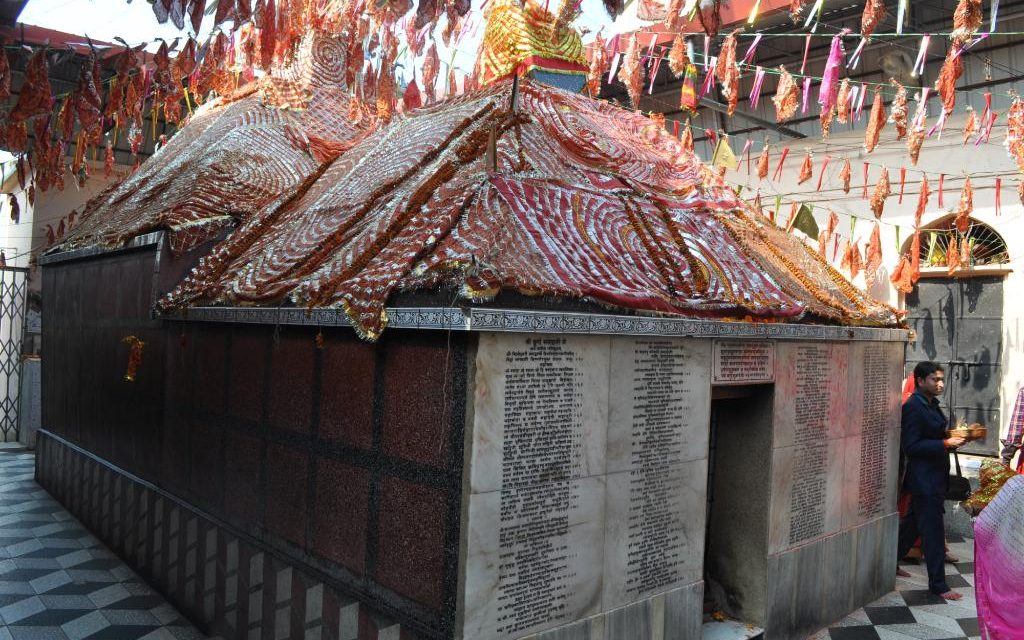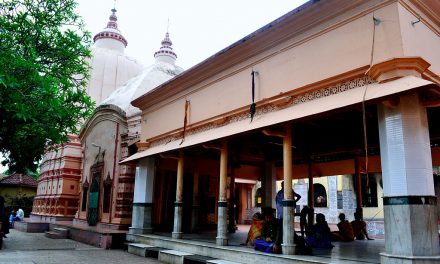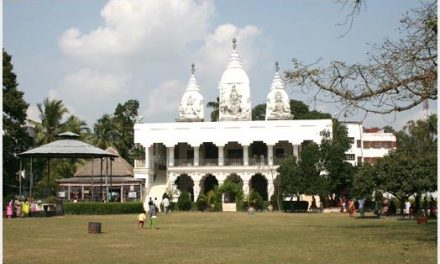One of ‘Ashtadasa Maha Shakti-Peethas came into being as ‘Mangla Gauri Temple’ or ‘Sarvamangla Devi Peeth'(benevolent of the all) at Gaya on the bank of the river ‘Falgu’ in Bihar, India. Bihar, the prominent eastern state of India, not only earned the enrichment in education in ancient times but also got its feminine divinity housing this abode of the Mother Goddess or Devi Sati.
Scriptural contacts with its establishment
Several ancient Hindu scriptures like ‘Padma Purana’, ‘Vayu Purana’, ‘Agni Purana’, ‘Shree Devi Bhagwat Purana’ and ‘Markandey Purana’ have been inscribed with the ‘Mangla Gauri Temple, and it has also been mentioned in tantric works where this shrine was established in 15th century(1459 AD) as per historical record.
Establishment of the temple according to ancient Indian texts
The King Prajapati Daksha(son of Lord Brahma) once organised a great ‘yajna'(sacrificial religious ritual) where all the religious dignitaries peers to him were cordially invited except His younger daughter ‘Sati’ and son-in-law ‘Lord Shiva'(Lord of the universe). Devi Sati urged Lord Shiva to attend the yajna even though He tried his best to dissuade Her. At last, Her presence in that auspicious ceremony created an unpleasant ambience when King Daksha left nothing to disgrace Her and her son-in-law ‘Lord Shiva’. Devi Sati tried Her best to make Her father, Daksha understand but failed. Then She cursed him and immolated herself on the same sacrificial altar. As a result, She had to surrender herself to death, but Her body did not burn. At a glance, Lord Shiva was informed of the mishap. Within a moment, He appeared in the yajna and demolished all the things with His companions. Not only that, He beheaded King Daksha, who was resurrected later. Being sorrowful and enraged, He bore His beloved better half onto his shoulders. He started His destructive dance, almost bringing the universe to the brink of extinction. Then Lord Vishnu was bolded to calm down Lord Shiva, utilising His ‘Sudarshan Chakra'(disc of auspicious vision) to mutilate the dead body of Devi Sati. Devi Sati’s body was dismembered into fifty-one pieces, of which breasts fell here to make the place holy, setting up a peeth or temple later.
Architectural decoration
The existing main temple was built on a hillock, ‘Mangalagauri hill'(or on ‘Bhasmakoot Parvat’), where the temple faces the east. To have you visiting the goddess, you have to cover a flight of steps(assumed two hundred steps), or a motorable route can lead you there. In front of the temple, there locates a little hall or mandap. A fire pit is housed outside the courtyard where Homas and Havans are done. Several beautiful sculptures are carved on the walls of the sanctum. The shrine’s entrance door is so small in size that devotees have to incline to enter. The garbha griha(sanctum sanctorum) has two parts: the ‘Sabhamandir’ and the ‘sanctum sanatorium’. A flame named an ‘Akhand Deep’ is kept lighted up inside the temple for the whole day. For the devotees, this ‘Akhand Deep’ is very consecrated just by its darshan(visiting). It is a belief to the devotees that the ‘Akhand Deep’ has been burning since the establishment of the main temple and has never gone off. The main temple has two rounded stones symbolising Goddess Sati’s breasts. The temple is adorned with red churni. Two small shrines are dedicated to Lord Shiva and Mahishasura Mardini, Durga and Dakshina Kali. Four more temples are located in the Mangla Gauri Temple of Lord Ganesha, Maa Kali, Lord Shiva as a ‘Shivlingam’ with ‘Nandi’ outside and Lord Hanuman. At the starting point of climbing up the hillock, a remarkable and unforgettable temple of ‘Bhima'(one of the five Pandava brothers) is there. A knee impression is there, which the locals claim belongs to him when he did shraddha-karma and familiarised as ‘Bhimvedi Gaya’ later.
Legendary anecdote behind the name of the city and the assemblage of temples
It is a hearsay that a giant demon named ‘Gayasur’ had resided in this area. According to ancient Hindu texts, Lord Vishnu slew the demon crushing him under his feet. So, being crushed, the horrific demon transformed into numerous rocky hills, forming the topography of the present-day city. On the contrary, the deities decided to sit over the dead demon; hence, many temples are on these surrounding rocky hills.
About the idols and their worshippings
No idol exists in the temple. Here Goddess Mangla Gauri is worshipped in the form of a breast, a symbol of nourishment and as Her impersonation of benevolence. The priests perform regular puja(worshipping). Gaya is mainly a Vaishnavite pilgrimage centre. The monsoon season is very covetable here because Goddess Mangla Gauri is worshipped every Tuesday during this season. Women keep their fastings with prayers(Mangala Gauri Vrat) of their family’s properties and husbands’ successes and fame. To carry on the worshipping rituals, the photo of the goddess is first bathed in milk, curd and water and then the deity is worn with a piece of red cloth. After that, the deity is furnished with vermilion, henna and kohl and placed on a wooden plank. Seven varieties of fruits, five sorts of sweets and sixteen types of bangles are offered before the deity begins the prayers. Some trees like Pipal trees, Akshayavat and undying Banyan are believed sacred by the Hindus and are also offered prayers here. Some Tantriks offer ‘Bali'(sacrifice of animals) to Mother Goddess. It is a firm belief that no one returns from here with an empty hand.
Festivals
The famous festivity of this shrine is ‘Navaratri’, held in October. This shrine has earned fame for its ‘after-death ceremonies'(Shradh) for one living in this temple. Meditation and prayer during ‘Navaratri’ in this temple get the utmost holiness. On ‘Maha-Ashtami'(the eighth day), there is a huge gathering of devotees.
Dress code of the devotees
Like many other religious places in India, this temple also has a dress code. Men may wear a Shirt and Trousers, Dhoti or Pyjamas with upper cloth, and for women, the preferred dress code is sharee or half-sharee with blouse or churidar with pyjamas and upper cloth. Shorts, mini-skirts, middies, sleeveless tops, low-waist jeans and short-length T-Shirts are not allowed. Foreigners are also not beyond this dress code. Along with this rule, smoking and photography are equally prohibited in this temple.
Timings: The temple opens for the devotees every day from 5:00 a.m. to 1:00 p.m. in the first half and from 4:00 p.m. till 10:00 p.m. in the second half.
How to reach: The Mangla Gauri Temple is well connected with three modes of communication.
By Air: Gaya Airport is 8.7 km (5.44 miles) away from the temple, whereas Patna Airport is about 105 km (65.63 miles) from the temple.
By Railway: Gaya Junction is the nearest Railway Station at 4.83kms(3.02 miles) from the temple.
By Road: GT Road is the way which connects Gaya to North India. Buses, taxis and other local transport facilities can reach the temple. Gaya Bus Stand is 4.7 km (2.94 miles) from the temple.
Postal address: Mangla Gauri Mandir Road, Shakti Peetham, Gaya, Bihar-823001, India.
Image courtesy: Trip Advisor
















